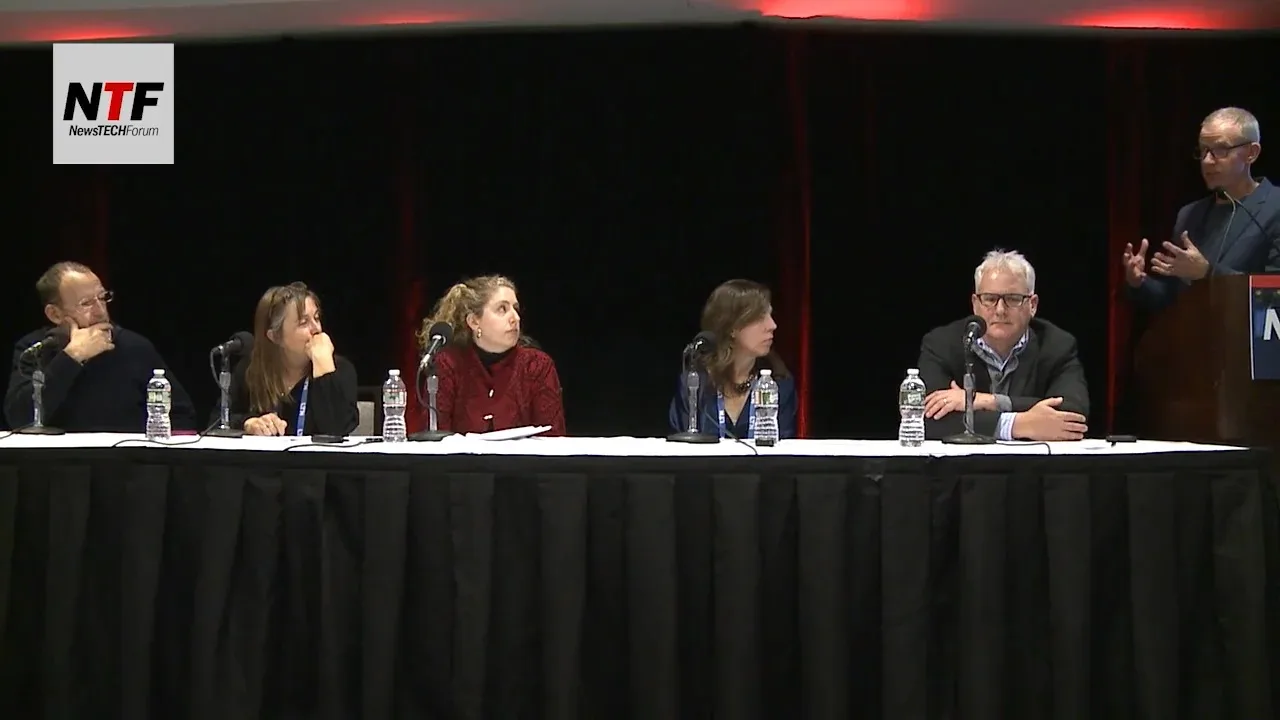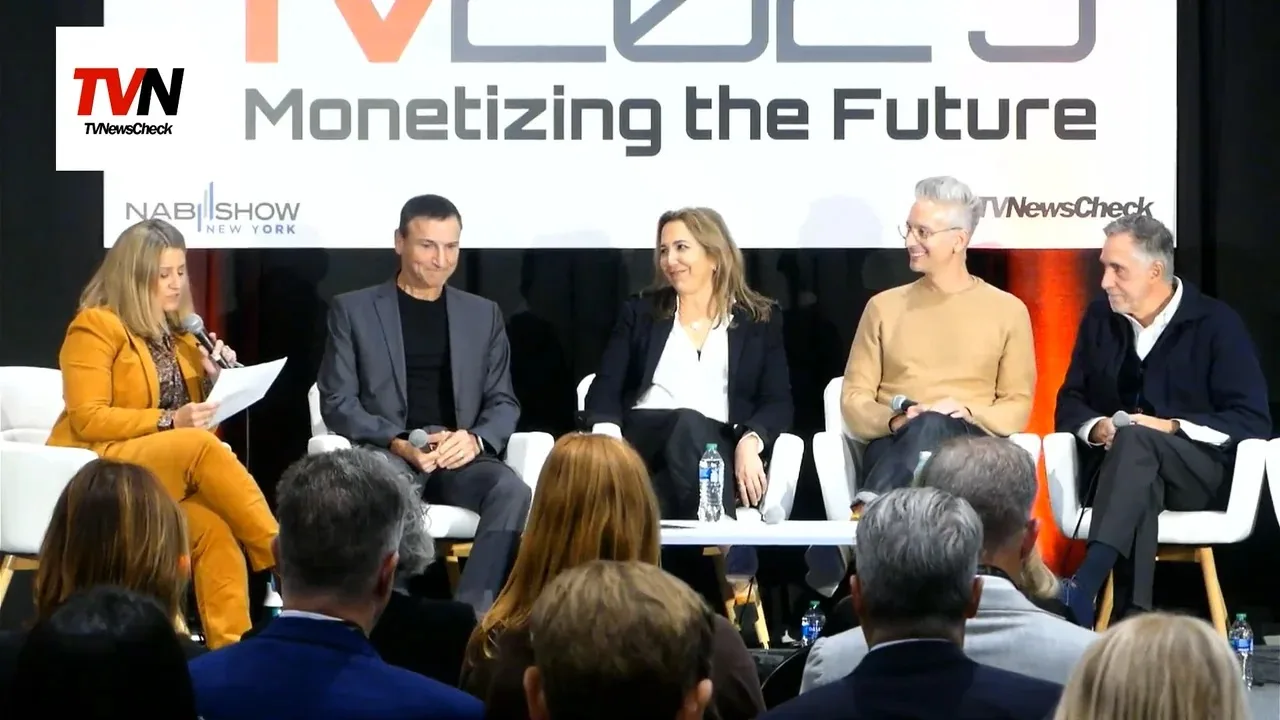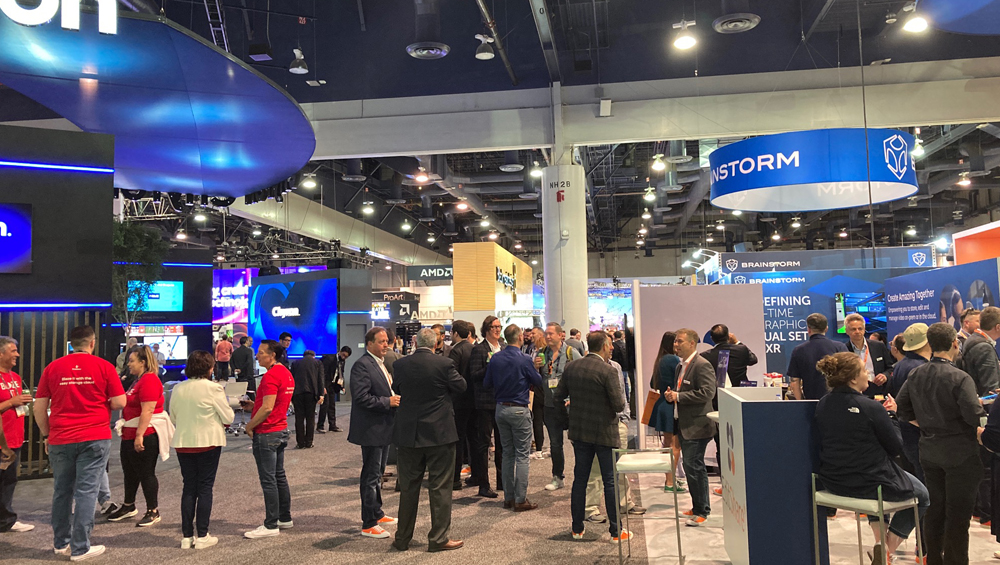
Attendance may have been almost halved by the pandemic, but tech vendors felt the more intimate environment allowed them to conduct business on a more productive level. On the show floor, the continued shift of broadcast workflows to the public cloud dominated many discussions, while others focused on NextGen TV’s pressing need to monetize.
Verance said today that LG Electronics is the first television manufacturer to implement ATSC 3.0 watermark detection on NextGen TVs — expected to enable reception of new interactive experiences via […]
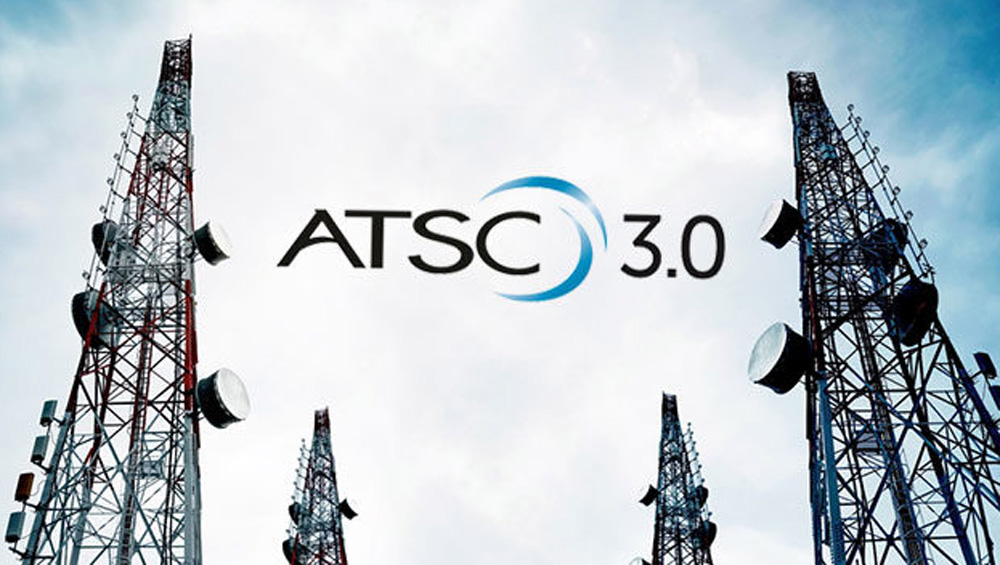
In a test car, LG Electronics installed a system to receive and display ATSC 3.0 signals on a rear-seat entertainment TV. As the car traveled between the signal coverage of WKAR Lansing, Mich., and WMYD Detroit, the NRT handoff technology succeeded in keeping a steady TV signal on the receiver.
LG Electronics and Alphonso today announced a significant investment by LG in Alphonso to bring together the two TV industry leaders’ technologies and innovations to LG’s smart TV lineup. With this investment […]
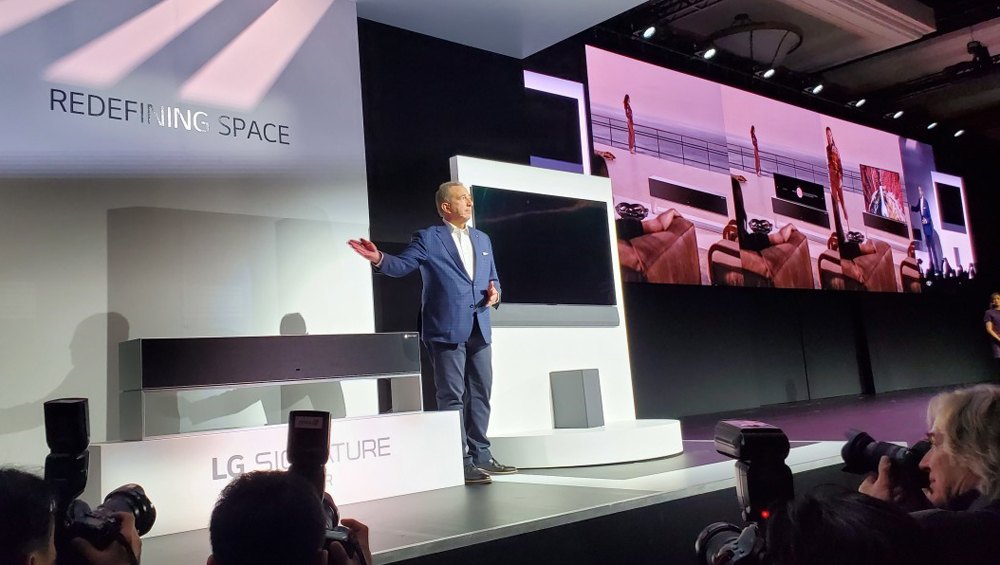
LG Electronics announced Monday that it will offer six premium OLED TV models supporting ATSC 3.0 in 2020, ranging in size from 55 to 88 inches. The announcement, made the day before the official opening of CES 2020, answers the question in the minds of many industry observers about whether 3.0 consumer receivers would actually make it to market in the United States, and offers one more indication for broadcasters that a voluntary transition to NextGen TV will actually be able to seen by viewers.
Noland And Auerbach: TVN’s Bright Futurists

The recipients of TVNewsCheck’s inaugural Women in Technology Futurist Awards — the TVB’s Abby Auerbach and LG and ATSC’s Madeleine Noland — epitomize the quality of taking a long-range view of where the television industry should be moving and figuring out how to get it there.
LG Electronics’ Noland To Receive Futurist Award

Madeline Noland, who chairs the ATSC committee supporting implementation of ATSC 3.0, has played a key role in developing the advanced approach to broadcasting, shepherding it through standard-setting processes.
 Tests conducted in Cleveland this summer revealed that ATSC 3.0 can support multiple simultaneous services modes, such as high-data-rate HD and 4K, and highly robust signals for mobile delivery. Wayne Luplow of Zenith R&D Labs recently presented the findings at the IEEE Broadcast Symposium and submitted them to the FCC. Above, engineers inside the van used for the comparison testing of 3.0 versus Mobile DTV (A/153) reception.
Tests conducted in Cleveland this summer revealed that ATSC 3.0 can support multiple simultaneous services modes, such as high-data-rate HD and 4K, and highly robust signals for mobile delivery. Wayne Luplow of Zenith R&D Labs recently presented the findings at the IEEE Broadcast Symposium and submitted them to the FCC. Above, engineers inside the van used for the comparison testing of 3.0 versus Mobile DTV (A/153) reception.
 Proponents of the next-gen TV transmission standard simulcast Game 2 of the World Series last night with ATSC 3.0 using an experimental license (on ch. 31) and the transmission facilities of Tribune’s WJW Cleveland, the local Fox affiliate.
Proponents of the next-gen TV transmission standard simulcast Game 2 of the World Series last night with ATSC 3.0 using an experimental license (on ch. 31) and the transmission facilities of Tribune’s WJW Cleveland, the local Fox affiliate.
SAN FRANCISCO (AP) — An environmental group accused three major television manufacturers Wednesday of misleading consumers and regulators about how much energy their high-definition screens devour by designing them to […]
The Advanced Television Systems Committee today presented Madeleine Noland, LG Electronics senior director of standards and technology, with its Bernard J. Lechner Outstanding Contributor Award during the 2016 ATSC Broadcast Television Conference in Washington.
 The world’s No.2 TV maker, South Korea’s LG Electronics, is betting that chopping prices almost in half before the U.S. year-end holiday season will create enough buzz to push its next-generation TV technology mainstream. The manufacturer and affiliate LG Display have invested billions of dollars in OLED displays to rebuild profit decimated by Chinese competition in the LCD TV market.
The world’s No.2 TV maker, South Korea’s LG Electronics, is betting that chopping prices almost in half before the U.S. year-end holiday season will create enough buzz to push its next-generation TV technology mainstream. The manufacturer and affiliate LG Display have invested billions of dollars in OLED displays to rebuild profit decimated by Chinese competition in the LCD TV market.
In major milestone, a key subcommittee adopts a transmission system reflecting a compromise among the major system proponents, including Samsung, LG Electronics and Sinclair Broadcast Group-backed ONE Media. It’s expected to be issued as a candidate standard within the next several weeks. Audio becomes the new sticking point.
 The company says his promotion reflects the important role of its U.S. R&D lab and recognizes Kim’s leadership and contributions, which include work on the next-generation ATSC 3.0 broadcast TV standard.
The company says his promotion reflects the important role of its U.S. R&D lab and recognizes Kim’s leadership and contributions, which include work on the next-generation ATSC 3.0 broadcast TV standard.
Starting in May, LG and GatesAir plan to test their Futurecast broadcast system, one of several being considered by the ATSC as the ATSC 3.0 standard, using a moth-balled transmitter and antenna belonging to Tribune’s WJW and operating on ch. 31. Eventually, the facility will be turned over to the NAB for testing other next-gen technology for ATSC.
Billions Of $ At Stake In ATSC Next-Gen Effort
 Companies are proposing a next-generation broadcast TV tech standard to reach a number of goals. But one result that’s not been in the spotlight is the mega-bucks that will flow to them in the form of royalties from whatever patented technology they can squeeze into the new standard.
Companies are proposing a next-generation broadcast TV tech standard to reach a number of goals. But one result that’s not been in the spotlight is the mega-bucks that will flow to them in the form of royalties from whatever patented technology they can squeeze into the new standard.
1,000 TV Antennas Given Away In Washington
At the “Broadcast TV Liberation Tour” kick-off promotion in Washington on Sunday, Antenna Direct, in partnership with TVFreedom.org and LG Electronics, USA, gave away 1,000 free antennas valued at around $120 each as part of the push to tell consumers that they can watch TV for free without having to pay cable companies.
TVFreedom, Antenna Direct and LG Electronics on Tuesday announced the kickoff of a nationwide effort to promote over-the-air TV. The campaign’s major kickoff begins with the giveaway of 1,000 C2-V DTV antennas on Nov. 23 in Washington. A smaller event is scheduled for Nov. 20 in Toledo, Ohio. To give the public an even bigger incentive to attend the kickoff, LG Electronics is making a 42-inch HDTV available for a raffle giveaway. The company also is providing 12 HDTVs for the event to display over-the-air signals from area broadcasters.
 The South Korean company is introducing two new models. It said it will ship 65-inch OLED TVs starting September in South Korea, Europe and North America. A 77-inch model will hit shelves later this year. LG said it is committed to OLED because the cost will come down and its advanced screen will eventually replace LCD screens. It forecasts that OLED TV sales will overtake LCD TV sales “within a few years.”
The South Korean company is introducing two new models. It said it will ship 65-inch OLED TVs starting September in South Korea, Europe and North America. A 77-inch model will hit shelves later this year. LG said it is committed to OLED because the cost will come down and its advanced screen will eventually replace LCD screens. It forecasts that OLED TV sales will overtake LCD TV sales “within a few years.”
European Union’s antitrust chief slapped the biggest ever cartel fine — over €1.47 billion ($1.96 billion) — on seven companies for allegedly rigging the international market of television and computer monitor tubes. The EU’s Commission ruled that, for a decade ending in 2006, the companies — including Philips, LG Electronics and Panasonic — artificially set prices, shared markets and restricted their output.
 LG Electronics plans to launch Internet-enabled TV based on Google’s platform in the United States in the week of May 21, as the firm seeks to gain a larger share of the emerging Internet TV market, a senior LG executive said today. The move reflects an aggressive push by the duo to defend against a potential threat from Apple.
LG Electronics plans to launch Internet-enabled TV based on Google’s platform in the United States in the week of May 21, as the firm seeks to gain a larger share of the emerging Internet TV market, a senior LG executive said today. The move reflects an aggressive push by the duo to defend against a potential threat from Apple.
Asian Giants Wrestle For TV Set Dominance
LG Electronics will steal a march on its rivals by bringing forward the launch of a 55-inch flat TV using next-generation technology, raising the stakes in a cut-throat battle for the living room between Asia’s top tech powerhouses.
NEW YORK (AP) – For flat-panel TVs, the choice for years has been between plasma and LCD. In the coming year, there’ll be another choice, at least for those prepared […]
LG Electronics Posts $229 Million Quarterly Loss
SEOUL, South Korea (AP) — LG Electronics reported its first quarterly loss in nearly two years as prices for flat screen televisions fell and devices like the iPhone provided stiff […]






















